Star Shaft Pointing - Busted:
Debunking the Star Shaft Theory of
the Great Pyramid
By Ralph
Ellis
To the west of Cairo stands the great brooding mass of the Great Pyramid. And within that great edifice there lies four small and almost insignificant shafts, that rise up from the pyramid’s internal chambers like four arrows loosely arranged in a megalithic quiver.
But while these shafts may look insignificant, the complexity of their construction led Rudolf Gantenbrink, the engineer whose small robot explored these shafts, to suggest that they were the most important elements in the entire pyramid. These shafts dart out at (almost) fixed angles from the internal chambers, piercing and severely disrupting the horizontal layers of stone that form the bulk of the pyramid. The architectural danger this creates is that this great shaft of stones, inclined at anything up to 45º from the horizontal, becomes so disconnected from the surrounding construction that it simply slides back down into the chamber below - just like an unsecured child whizzing down a water-slide. And so these sloping stones had to be securely connected to the rest of the pyramid with interlocking ‘girdle stones’, to prevent them sliding downwards into the chambers below.
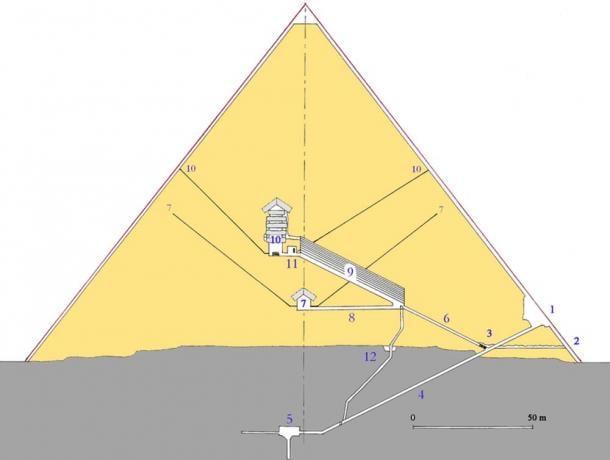
Fig 1. Inner structure of the Great Pyramid
of Khufu. Public
Domain
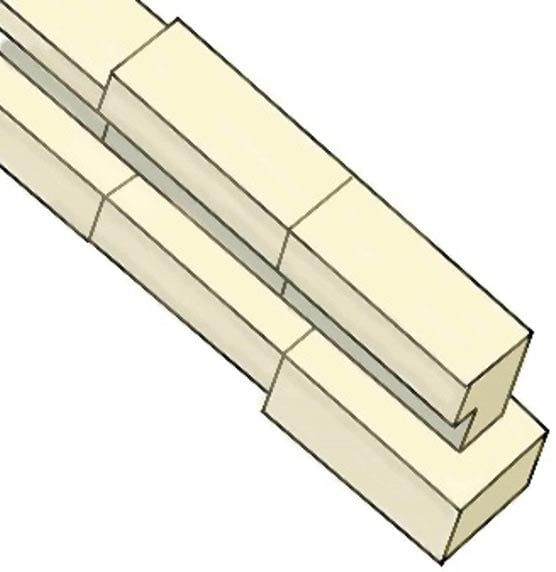
Fig 2. The construction of the small shafts
in the Great Pyramid is very complex. A flat lower stone is surmounted by a
stone containing a channel. But all these stones need tying into the rest of
the pyramid, to stop them slipping.
Like arrows released from a bow, these four shafts appear to dart out at specific angles, perhaps to specific locations in the night sky. And so Robert Bauval devised a theory that these small shafts were designed to point towards particular stars in a particular era. Furthermore, Bauval went on to claim that because the elevation of these stars changes with the advancing millennia, due to the precession of the equinox (the slow precessional wobble of the Earth), a precise date for the construction of the Great Pyramid could be derived. As can be seen in fig 4, the southern shafts were said to point towards Sirius and Alnitak. These were significant stars because Sirius is the brightest star in the night sky, while Alnitak is the brightest star in the belt of Orion. But the northern shafts were much less convincing in their trajectories, because they appeared to point randomly into the northern skies. The insignificant stars pointed to in the northern skies were said to be Kochab and Thuban, with the latter being claimed as the pole star in 2450 BC.
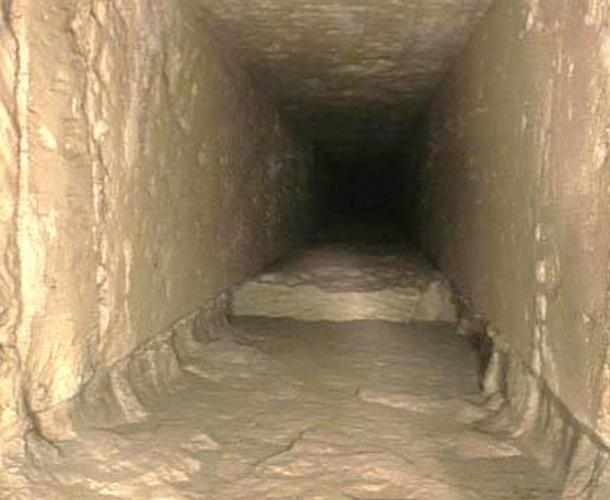
Fig 3. Inside one of the small shafts in the
Great Pyramid. There were some regions in these shafts, like this one, that
were less than expertly carved. Rudolf Gantenbrink referred to them as ‘Monday
morning blocks’.
Alnitak, the largest star in Orion, reaches an altitude of exactly 45.0°, the elevation of the K.S. shaft, at midnight in 2480 BC. But it does not achieve this on any special or significant date, for this coincidence occurs on about November 9th. But at midnight on this very same day, Sirius is nowhere near the Q.S. shaft angle of 39.5°. We need to wait another one hour forty minutes for Sirius to reach its culmination in elevation of 39.4°. So this is not actually a simultaneous conjunction of events on a significant date. In fact, the diagram in fig 4 represents just two stars - only one of which is associated with Orion and therefore with Giza - whose elevation-dates have been specifically chosen to match the angles these shafts. And they match these shaft angles at different times on a calendrical date of no consequence. (Data derived from the Voyager 4.0 computer planisphere.)
The situation for the star-pointing theory gets even worse when we turn to the northern shafts in the Great Pyramid, for neither of these northern stars is significant in brightness, position or significance. And the claim that Thuban was the ‘pole star’ is not entirely correct. In reality, Thuban was displaced by 2° from the celestial pole in that era, and displaced a further 0.5˚ from the position that the shaft angle points to. Yet despite the star-pointing theory being contrived to fit a chosen date in this fashion, it has almost become established as a fact. Open any serious historical report or book on the pyramids, and there will invariably be a picture of this star-pointing theory, and a therefore a positive date for the construction of the Great Pyramid of about 2450 BC.
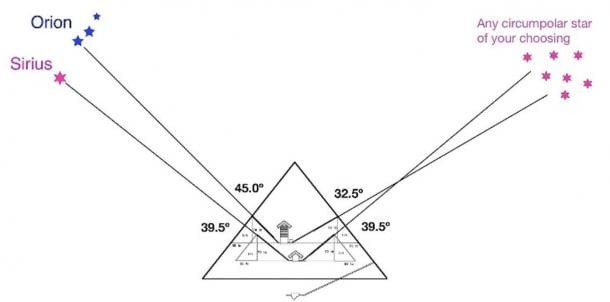
Fig 4. The star-shaft pointing theory
championed by Robert Bauval. The shafts are said to point at specific stars in
a specific era, and so we can supposedly date the construction of the Great
Pyramid from these angles.
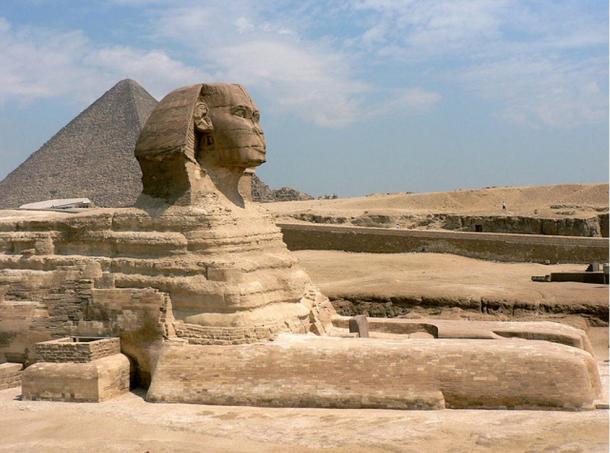
Fig 5. The Sphinx of Giza, Egypt.
(Eviljohnius, Flickr/CC BY 2.0)
However, it is fairly obvious why Egyptologists decided to jump upon the star-shaft dating bandwagon, rather than the rejected and dejected Leo dating theory. Egyptological ‘experts’ date the construction of the Great Pyramid to about 2550 BC. But this date is based upon some highly disputed evidence for a poorly daubed cartouche of Pharaoh Khufu, situated way up in the attic-chambers above the King’s Chamber. But the 4th Dynasty pharaoh associated with this pyramid was not called Khufu; his name was Pharaoh Ufura, a different spelling completely. And so the provenance of the cartouche in the attic chambers is not only disputed, it is also spelt incorrectly.
In addition, no pharaoh in his right mind would ever design a tomb that did not have its internal walls carved and painted with the king’s great name; with images of the supportive and approving gods; and with extensive quotes from the Book of the Dead. Clearly, the Great Pyramid was not the tomb of a pharaoh, and no royal mummy has ever been discovered in an Egyptian pyramid. Conversely, just because a succession of English kings are buried in Westminster Abbey, does not mean that this great cathedral is merely a tomb. The megalithic pyramids at Giza and Dahshur were most definitely not tombs, they were cathedrals.
So the star-shaft date and the classical date for the construction of the Great Pyramid ended up being within a century of each other, which was highly convenient for all concerned. And the result was an informal ‘conspiracy of mutual confirmation’ between Robert Bauval and academia, which championed and propagated a false theory simply because it supported a dubious official construction date for the Great Pyramid. Had Bauval’s theory derived a date of 7450 BC, these same self-serving academics would have ridiculed it, just as they ridiculed the ‘absurd’ 10,500 BC Leo date. But the star-pointing date was confirmatory and seemingly scientific, so nobody within academia wanted to investigate the issue further, because it was not in their interests to do so.
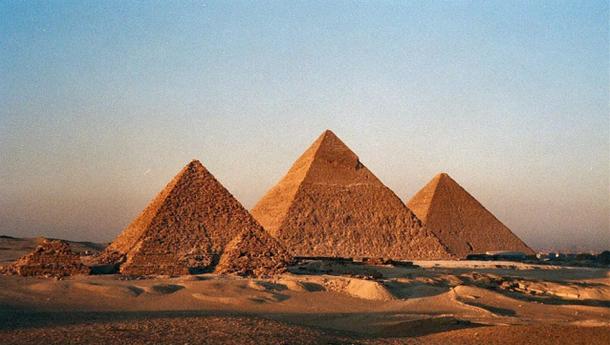
Fig 6. The pyramids of Giza, Egypt. (Bruno
Girin, Flickr/CC BY-SA 2.0)
In which case, we might suspect that other aspects of this grand design are also mathematical. And we would be right, for the angles of elevation depicted by the four small shafts inside the Great Pyramid are 45°, 39.5°, 39.5° and 32.5°. And the numerical differences between these angles are as follows:
45° minus 39.5° = 5.5°
39.5° minus 32.5° = 7°
This gives us a ratio of 5.5:7, which is obviously half of the Great Pyramid ratio of 11:7. So here are those same Pi ratio numbers yet again, but this time involving angles rather than lengths. It would appear to be undeniable that these shafts angles have been derived from the mathematical function of Pi, because the design of the Great Pyramid itself is also based upon Pi, as has just been demonstrated. In which case these are Pi shafts, not star shafts. And the book K2, Quest of the Gods goes on to prove that the relationship of these shafts to Pi was a cognitive component in this design.
In which case, the angles chosen for these complex little shafts are related to Pi, not stars - their angles of elevation have been designed to resolve into a ratio that represents 1/4 of Pi. But an angle derived from a mathematical function cannot be amended so that it neatly points towards a particular star on a particular date in a particular era. A star-pointing shaft needs some flexibility in its angle, so it can be arranged to point at the intended star. However, a random star in a random era can always be arranged to match these fixed Pi-shaft angles, to force things to fit. And this is what Robert Bauval has done - force a date to match the shaft angle.
But the methodology is in error, and so the results are wrong. And the resulting erroneous 2450 BC date is why Keeper of Genesis ended up with a highly unlikely 8,000 year interlude, between the start and the finish of the Giza construction project. Unfortunately for Robert Bauval a fixed Pi-based shaft angle cannot be arranged to point at a specific date in a specific era, and so a large number of otherwise respected reference texts will have to be amended to delete this error.
Note: In reality, these shaft angles are actually terrestrial map coordinates. And they are based upon the Pi-ratio of the Great Pyramid, because they were designed to draw a stylized imitation of the Great Pyramid on a map.
Thoth, Architect of the Universe, 1998
K2, Quest of the Gods, 2001
From Ancient Origins
@ http://www.ancient-origins.net/opinion-guest-authors/star-shaft-pointing-busted-debunking-star-shaft-theory-great-pyramid-003643
For more information about the Great Pyramid see http://nexusilluminati.blogspot.com/search/label/great%20pyramid
- Scroll down
through ‘Older Posts’ at the end of each section
Hope you like this
not for profit site -
It takes hours of work every day by
a genuinely incapacitated invalid to maintain, write, edit, research,
illustrate and publish this website from a tiny cabin in a remote forest
Like what we do? Please give anything
you can -
Contribute any amount and receive at
least one New Illuminati eBook!
(You can use a card
securely if you don’t use Paypal)
Please click below -
Spare Bitcoin
change?
For further enlightening
information enter a word or phrase into the random synchronistic search box @
the top left of http://nexusilluminati.blogspot.com
And see
New Illuminati – http://nexusilluminati.blogspot.com
New Illuminati on Facebook - https://www.facebook.com/the.new.illuminati
New Illuminati Youtube Channel - https://www.youtube.com/user/newilluminati/playlists
New Illuminati’s OWN Youtube Videos
-
New Illuminati on Google+ @ For
New Illuminati posts - https://plus.google.com/u/0/+RamAyana0/posts
New Illuminati on Twitter @ www.twitter.com/new_illuminati
New Illuminations –Art(icles) by
R. Ayana @ http://newilluminations.blogspot.com
The Her(m)etic Hermit - http://hermetic.blog.com
DISGRUNTLED SITE ADMINS PLEASE NOTE –
We provide a live link to your original material on your site (and
links via social networking services) - which raises your ranking on search
engines and helps spread your info further!
This site is published under Creative Commons (Attribution) CopyRIGHT
(unless an individual article or other item is declared otherwise by the copyright
holder). Reproduction for non-profit use is permitted
& encouraged - if you give attribution to the work & author and include
all links in the original (along with this or a similar notice).
Feel free to make non-commercial hard (printed) or software copies or
mirror sites - you never know how long something will stay glued to the web –
but remember attribution!
If you like what you see, please send a donation (no amount is too
small or too large) or leave a comment – and thanks for reading this far…
Live long and prosper! Together we can create the best of all possible
worlds…
From the New Illuminati – http://nexusilluminati.blogspot.com
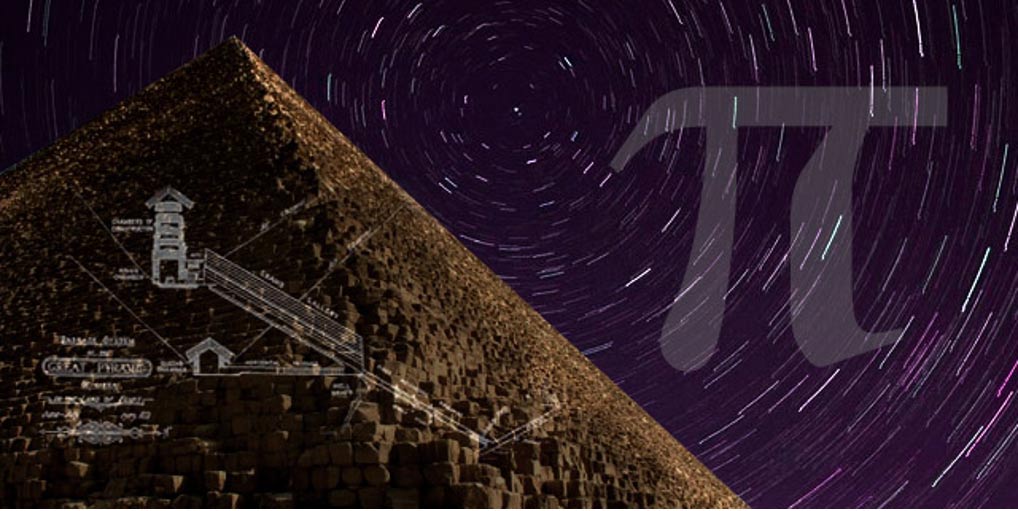
look into Dr Osmanagich and the Bosnian Pyramids -- much more has been revealed by the open-source archaeology of that project
ReplyDeleteAye - for articles and videos about the Bosnian pyramids see http://nexusilluminati.blogspot.com/search/label/bosnian%20pyramids - and see 'older posts' at the end of each section
Delete